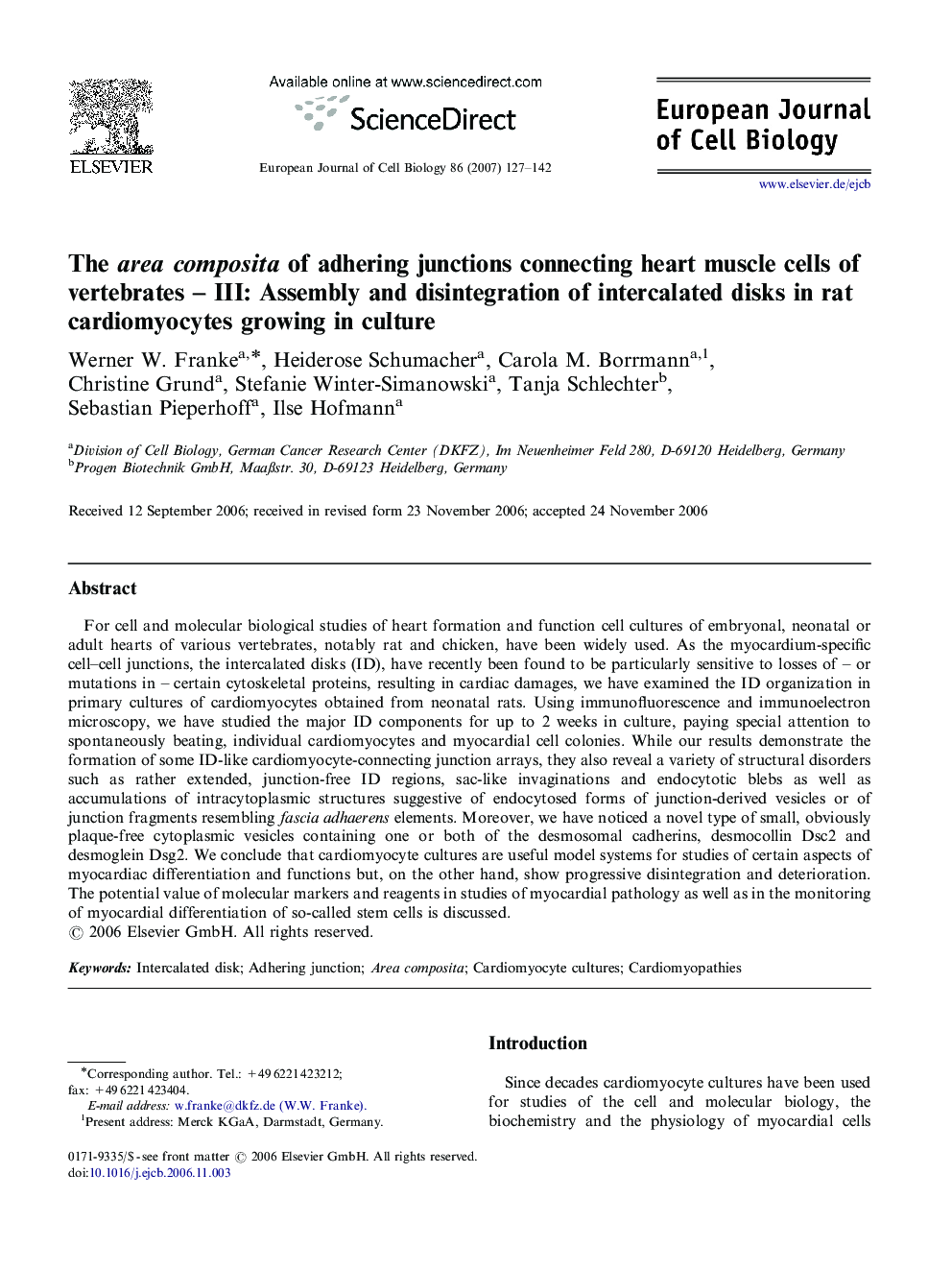| Article ID | Journal | Published Year | Pages | File Type |
|---|---|---|---|---|
| 2179254 | European Journal of Cell Biology | 2007 | 16 Pages |
For cell and molecular biological studies of heart formation and function cell cultures of embryonal, neonatal or adult hearts of various vertebrates, notably rat and chicken, have been widely used. As the myocardium-specific cell–cell junctions, the intercalated disks (ID), have recently been found to be particularly sensitive to losses of – or mutations in – certain cytoskeletal proteins, resulting in cardiac damages, we have examined the ID organization in primary cultures of cardiomyocytes obtained from neonatal rats. Using immunofluorescence and immunoelectron microscopy, we have studied the major ID components for up to 2 weeks in culture, paying special attention to spontaneously beating, individual cardiomyocytes and myocardial cell colonies. While our results demonstrate the formation of some ID-like cardiomyocyte-connecting junction arrays, they also reveal a variety of structural disorders such as rather extended, junction-free ID regions, sac-like invaginations and endocytotic blebs as well as accumulations of intracytoplasmic structures suggestive of endocytosed forms of junction-derived vesicles or of junction fragments resembling fascia adhaerens elements. Moreover, we have noticed a novel type of small, obviously plaque-free cytoplasmic vesicles containing one or both of the desmosomal cadherins, desmocollin Dsc2 and desmoglein Dsg2. We conclude that cardiomyocyte cultures are useful model systems for studies of certain aspects of myocardiac differentiation and functions but, on the other hand, show progressive disintegration and deterioration. The potential value of molecular markers and reagents in studies of myocardial pathology as well as in the monitoring of myocardial differentiation of so-called stem cells is discussed.
